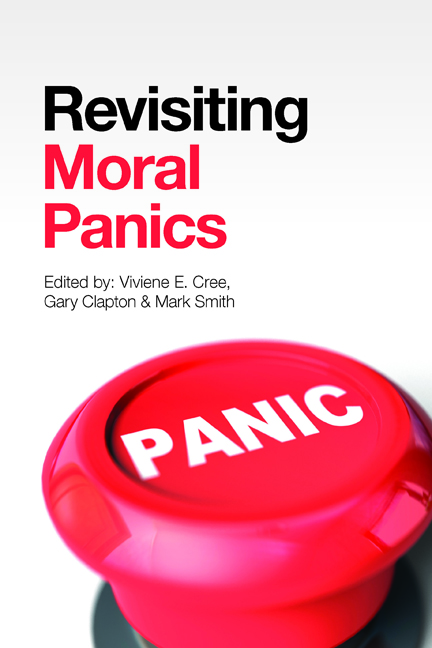Book contents
- Frontmatter
- Contents
- Contributors
- Preface
- Commentary moral panics yesterday, today and tomorrow
- Part One Gender and the family
- Part Two Moral panics in our time? Childhood and youth
- Part Three The state, government and citizens
- Part Four Moral crusades, moral regulation and morality
- Afterword the moral in moral panics
- Conclusion Moral panics and beyond
- Index
Fifteen - Patient safety: a moral panic
Published online by Cambridge University Press: 08 March 2022
- Frontmatter
- Contents
- Contributors
- Preface
- Commentary moral panics yesterday, today and tomorrow
- Part One Gender and the family
- Part Two Moral panics in our time? Childhood and youth
- Part Three The state, government and citizens
- Part Four Moral crusades, moral regulation and morality
- Afterword the moral in moral panics
- Conclusion Moral panics and beyond
- Index
Summary
Introduction
This chapter introduces a new subject into the moral panic literature – patient safety – and in doing so explores the ways in which moral panics around patient safety have been used by physicians as part of a deliberate strategy in order to bring about institutional transformation. It is important to note that the term ‘moral panic’ has a much longer lineage than is commonly thought to be the case. It first appeared in the Quarterly Christian Spectator in 1830, and then again in The Journal of Health Conducted by an Association of Physicians in 1831. In this journal, a French physician visiting Sunderland (in England) praised the English government for its approach to the cholera epidemic. He congratulated the government for not surrounding the town with a cordon of troops which as ‘a physical preventive would have been ineffectual and would have produced a moral panic far more fatal than the disease now is’ (unknown, 1831, p 180). The term was picked up much later, in 1964, with the Canadian sociologist Marshall McLuhan's ground-breaking work on the influence of the media, and later expanded by Jock Young (1971) and Stan Cohen (1972). Given the historical nature of the phenomenon, it seems both unrealistic and unlikely to assume that moral panics are inherently media driven. However, it seems equally realistic and likely to assume that the media plays, at times, a key role, as we will see in the case-study examples that follow.
The chapter focuses on two case-study examples, anaesthesia as a specific medical intervention and healthcare more broadly, noting that there are many more possible cases of which ‘injury to the person’ is a subfield that could have been considered, including, for example, automotive safety, consumer-product safety and medical insurance.
Moral panic and institutionalism
A moral panic may be described simply as a perceived threat to society and its cultural values, based on a hitherto unacknowledged or taboo subject. There may be a perceived individual, group or class of individual who is held to be responsible for the threat, usually portrayed in the media as ‘folk devils’; those who identify the threat are often known as ‘moral entrepreneurs’ (Cohen, 1972).
- Type
- Chapter
- Information
- Revisiting Moral Panics , pp. 179 - 188Publisher: Bristol University PressPrint publication year: 2015



